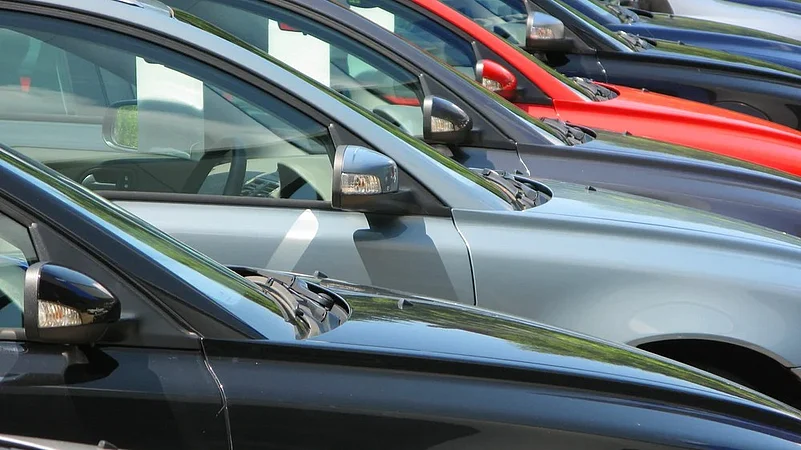
GST cut could reduce PV and two-wheeler prices, easing affordability for price-sensitive buyers.
Entry-level cars and motorcycles stand to gain most after years of high taxes, emission norms, and rising interest rates.
Rationalised tax regime may unlock demand, with brokers and analysts viewing it as a major growth catalyst for the auto sector.
Shares of automobile companies surged as much as 8% on August 18, buoyed by the buzz that the government is mulling over prospects of cutting the Goods and Services Tax (GST) on passenger vehicles (PVs) and two-wheelers.
The automobile sector could be in for a much-needed boost this festive season, as the GST rate cut, if approved, would directly reduce ex-showroom prices, especially for mass-market and entry-level models, segments that were long weighed down by high costs and sluggish demand.
At present, all passenger vehicles attract 28% GST, along with a compensation cess of 1–22% depending on size and engine capacity, taking total taxes to as much as 50%. Two-wheelers also face a 28% levy, with an additional 3% cess on models above 350cc. By contrast, electric vehicles enjoy a far lower 5% GST rate with no cess, a disparity the industry has flagged for years.
The revised structure under consideration proposes to streamline slabs, keeping the 5% and 18% rates while scrapping 12% and 28%. In his Independence Day address, Prime Minister Narendra Modi hinted at the scale of the reform, labelling it a ‘double Diwali gift’ for consumers and businesses. “Taxes needed by the common man will be reduced substantially, and everyday items will become very cheap. Our MSMEs and small entrepreneurs will get a huge benefit,” he said.
Shares of automobile majors reacted to the developments in trade today. Shares of Hero MotoCorp led the gains within the auto pack, surging 8%, followed by Maruti Suzuki, TVS Motor and Bajaj Auto, which gained 5-6%.
The impact on the auto sector could be profound. A cut from 28% to 18% would directly lower prices, easing affordability for price-sensitive buyers. Entry-level PVs and motorcycles, which have borne the brunt of higher acquisition costs, tighter emission rules and rising interest rates, stand to gain the most. Sales of small cars, excluding utility vehicles, dropped 11.6% year-on-year in FY25, according to SIAM, while entry-level motorcycles remained flat.
Brokerages are already factoring in the potential upside. Morgan Stanley noted that autos make up 14% of GST collections and form a major part of the 28% tax basket. The firm views a cut in GST rates as a game-changer for two-wheelers, particularly for Hero MotoCorp and Eicher Motors, while Maruti Suzuki and Mahindra & Mahindra are expected to benefit in the passenger vehicles categories.
Industry executives and analysts have long argued that a rationalised tax regime could unlock more demand, particularly in the mass market. If the GST council does give the green light, with this Diwali likely to bring the auto industry, a reason to celebrate.



























